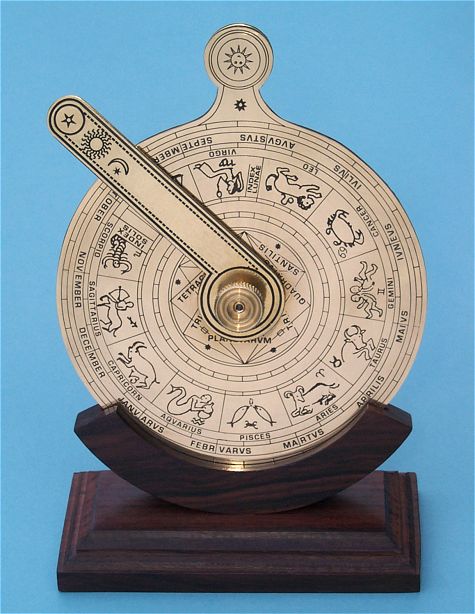Solid Brass Nocturnal with Hardwood Stand $45
The nocturnal or "night disc," was an early sea-faring navigational instrument.
The nocturnal was used as a means of calculating the latitude and the time at night for use in navigation.
First described in 1272, the nocturnal continued to be improved upon until its use faded in the late fifteenth
century.
The nocturnal is shaped somewhat like a hand mirror, and elaborately decorated.
The circumference was divided into twelve equal parts corresponding to the months of the year.
There was an "index" or "pointer" that pivoted from the center of the disc.
The nocturnal was placed at arm's length with the North Star Polaris visible through a hole in the center.
The pointer was aligned to the nearby star Kochab, the second brightest star in Ursa Minor, which circles
the pole star Polaris.
The nocturnal’s scale would yield a correction in arcminutes, to be applied to Polaris.
The slight distance of Polaris from the true pole would otherwise result in a 50-mile error if not compensated.
This simple method of latitude determination was popular until the fifteenth century.
The nocturnal could also be used to determine the time from the celestial clock that rotates around Polaris.
The month and day were set on the scales around the perimeter.
The readings taken would yield the time.
This full size faithful solid brass reproduction of the nocturnal measures 4 1/2 inches (11.4
cm) in diameter, 5 1/2 inches (14.0 cm) tall, and weighs a solid 9.1 ounces (258 grams).
The hardwood base measures 4 1/2 inches (11.4 cm) wide and 2 1/8 inches (5.4 cm) deep.
The Solid Brass Nocturnal with Hardwood Stand sells for only $45.
We also offer solid brass Astrolabes.
|









